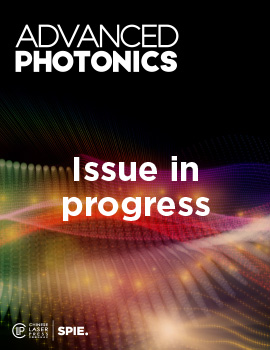Yaqin Zheng, Yuan Liao, Yulong Fan, Lei Zhang, Zhang-Kai Zhou, Dangyuan Lei
Advanced Photonics, Vol. 7, Issue 01, 016003, (January 2025) https://doi.org/10.1117/1.AP.7.1.016003

TOPICS: Holograms, Holography, Printing, Camouflage, Design, Color, Multiplexing, Polarization, Image encryption, Incident light
Ultracompact metasurfaces have gained a high reputation for manipulating light fields precisely within a subwavelength scale, bringing great development to the fields of nanophotonics, integrated optics, and quantum technology. There is broad interest in expanding the working band of metasurfaces to expand functionalities and the scope of applications. However, increasing the number of working wavelengths multiplexed in a single holographic metasurface is always complicated by two vital issues, i.e., spectral cross talk and the efficiency imbalance between different wavelength channels. Therefore, holographic metasurfaces with multiplexed working wavelengths over three are seldom reported. To address these two issues, we present a design strategy based on unevenly distributed pixels (UEDPs). As a proof of concept, a UEDP-based metasurface is designed to offer a camouflage method to hide four encrypted holographic images in a multicolor printed image. Our results not only demonstrate the idea of UEDP as an easy-to-implement and effective way for strengthening the wavelength multiplexing of metasurfaces but also give rise to a camouflage metasurface by integrating high-capacity and high-security encrypted holographic information with a single printed image. We believe that the generic UEDP-based metasurface design strategy can be readily extended to the realization of artificial functional structures in various disciplines, such as optics, thermology, and acoustics.



 Receive Email Alerts
Receive Email Alerts